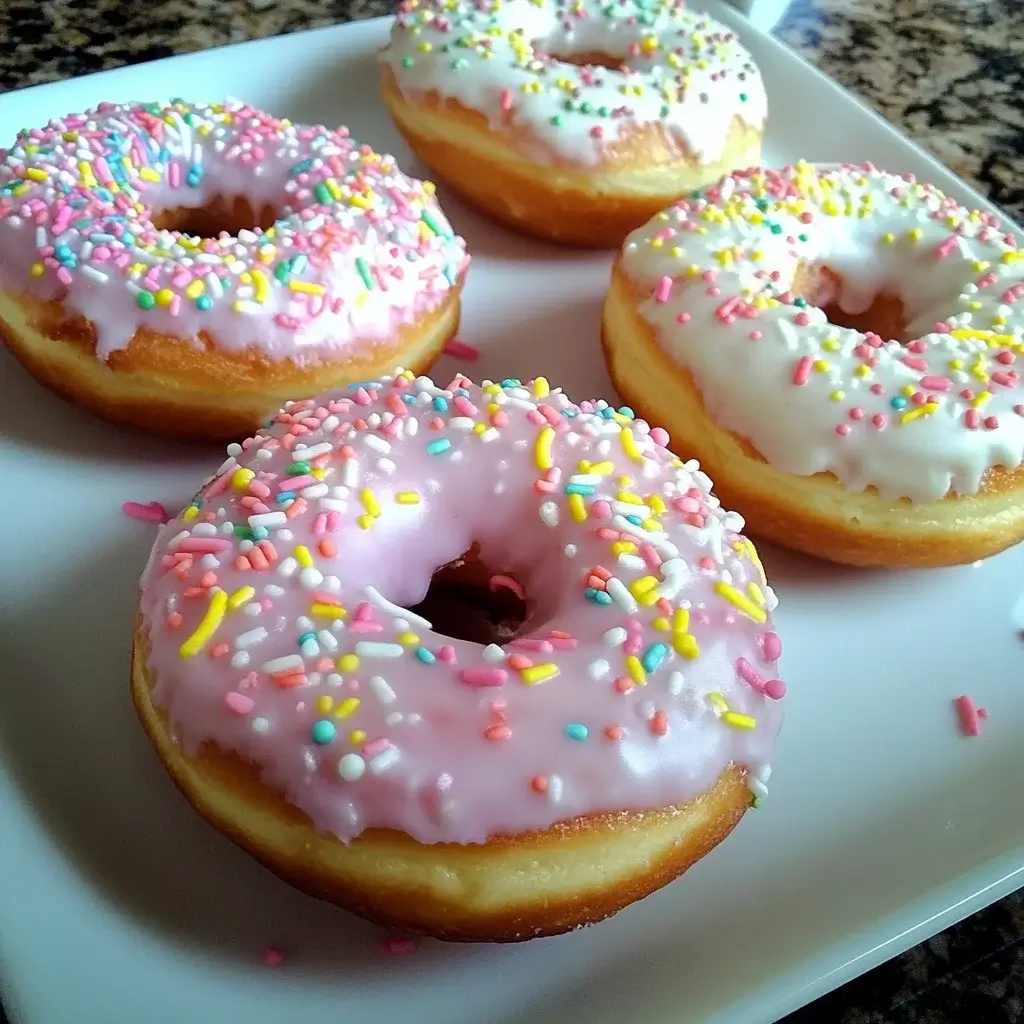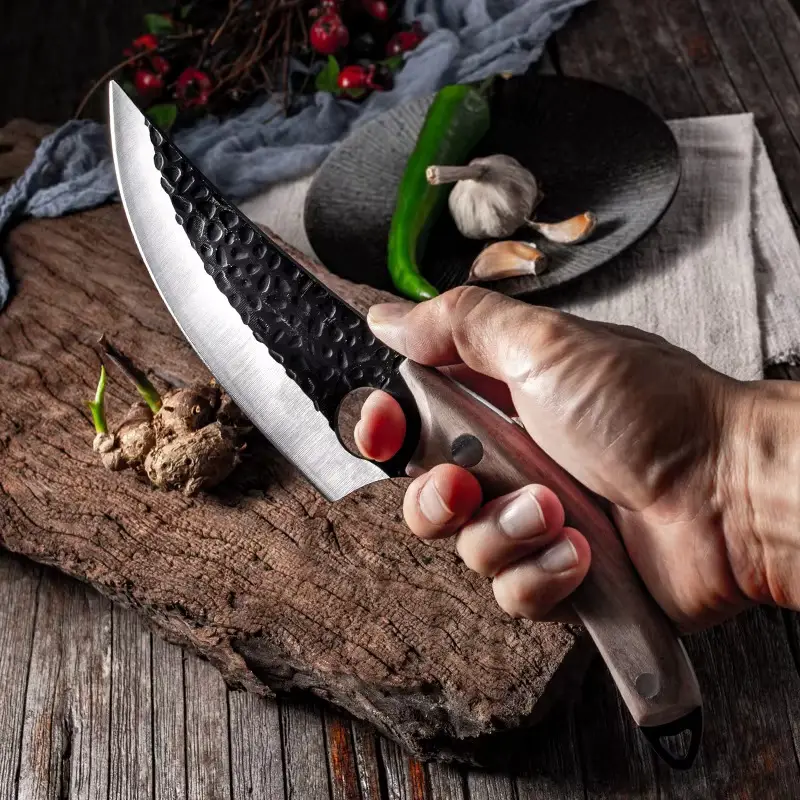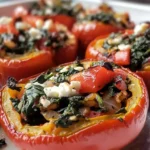After whipping up a batch of these Easter Pastel Sprinkle Donuts last weekend, my kitchen transformed into a pastel-colored wonderland, and my family couldn’t get enough! The light, fluffy donuts, adorned with a sweet glaze and vibrant sprinkles, were an instant hit. Even my usually picky eaters devoured them, declaring them the “best donuts ever.” The pastel colors are just perfect for Easter, and they bring such a cheerful vibe to any brunch table or dessert spread. If you’re looking for a fun, festive, and utterly delicious treat to make this Easter, look no further. These donuts are guaranteed to bring smiles and a sprinkle of joy to your celebrations!
Ingredients
- All-Purpose Flour: The foundation of our donuts, providing structure and that classic fluffy texture.
- Granulated Sugar: Adds sweetness to the dough and glaze, balancing the other flavors and contributing to browning.
- Instant Yeast: Our leavening agent, making the donuts light and airy with a delightful rise.
- Salt: Enhances the flavors of all the ingredients and controls the yeast activity.
- Milk: Adds moisture and richness to the dough, contributing to a softer crumb.
- Eggs: Bind the ingredients together, add richness, and contribute to the donut’s tender texture.
- Unsalted Butter: Adds flavor, richness, and tenderness to the donuts. Melted butter helps create a moist crumb.
- Vanilla Extract: Enhances the overall flavor profile, adding a warm and comforting note.
- Vegetable Oil (for frying): Used for frying the donuts to golden perfection, creating a crispy exterior and soft interior. You can also bake them if you prefer.
- Powdered Sugar: The base for our sweet and smooth glaze, creating a beautiful canvas for the sprinkles.
- Milk (for glaze): Used to thin out the powdered sugar to the perfect glaze consistency.
- Pastel Sprinkles: The star of the show! These add a festive touch and delightful crunch, perfect for Easter.
Instructions
- Activate the Yeast: In a large bowl, warm the milk slightly (lukewarm to the touch). Add the instant yeast and a teaspoon of sugar to the warm milk. Stir gently and let it sit for 5-10 minutes until it becomes frothy. This indicates that the yeast is active and ready to work its magic.
- Combine Dry Ingredients: In a separate large bowl, whisk together the all-purpose flour, remaining granulated sugar, and salt. This ensures the dry ingredients are evenly distributed before adding the wet ingredients.
- Mix Wet Ingredients and Yeast Mixture: In a separate bowl, lightly beat the eggs and vanilla extract. Once the yeast mixture is frothy, add the beaten eggs and vanilla extract to it. Stir to combine.
- Combine Wet and Dry Ingredients: Pour the wet ingredients into the bowl with the dry ingredients. Using a wooden spoon or spatula, mix until just combined. Be careful not to overmix at this stage.
- Add Melted Butter: Gently fold in the melted and cooled unsalted butter into the dough. Mix until the butter is fully incorporated and the dough starts to come together. The dough will be slightly sticky, which is perfectly normal.
- Knead the Dough: Turn the dough out onto a lightly floured surface. Knead the dough for 5-7 minutes until it becomes smooth and elastic. If the dough is too sticky, add a tablespoon of flour at a time, but avoid adding too much as it can make the donuts tough. You can also use a stand mixer with a dough hook for kneading, which makes the process easier. Knead on low speed for about 6-8 minutes.
- First Rise (Bulk Fermentation): Place the kneaded dough in a lightly greased bowl, turning to coat all sides. Cover the bowl with plastic wrap or a clean kitchen towel. Let the dough rise in a warm place for about 1-1.5 hours, or until it has doubled in size. This process, known as bulk fermentation, allows the yeast to work its magic and develop flavor and texture.
- Punch Down and Second Rise: Once the dough has doubled, gently punch it down to release the air. Turn the dough out onto a lightly floured surface. Knead it lightly for a minute or two to redistribute the yeast and relax the gluten.
- Shape the Donuts: Roll out the dough to about ½ inch thickness. Use a donut cutter (or two different sized round cookie cutters – one larger and one smaller for the hole) to cut out donut shapes. Place the cut donuts and donut holes on a parchment-lined baking sheet.
- Second Rise (Proofing): Cover the baking sheet with a clean kitchen towel and let the donuts proof in a warm place for another 30-45 minutes, or until they have puffed up and are almost doubled in size. This second rise, called proofing, is crucial for achieving light and airy donuts.
- Heat the Oil (for frying): While the donuts are proofing, prepare for frying. Pour vegetable oil into a deep, heavy-bottomed pot or deep fryer to a depth of about 3-4 inches. Heat the oil over medium heat until it reaches 350°F (175°C). Use a candy thermometer to ensure accurate temperature. Maintaining the correct oil temperature is key for perfectly cooked donuts.
- Fry the Donuts: Carefully place a few donuts at a time into the hot oil, being careful not to overcrowd the pot. Fry for about 1-2 minutes per side, until golden brown and cooked through. Use a slotted spoon or tongs to flip the donuts halfway through.
- Drain Excess Oil: Remove the fried donuts with a slotted spoon or tongs and place them on a wire rack lined with paper towels to drain excess oil. Allow them to cool slightly before glazing.
- Make the Glaze: While the donuts are cooling, prepare the glaze. In a medium bowl, whisk together the powdered sugar and milk until smooth and creamy. Add a few drops of vanilla extract for extra flavor if desired. If the glaze is too thick, add a teaspoon of milk at a time until you reach the desired consistency. If it’s too thin, add a tablespoon of powdered sugar.
- Glaze the Donuts: Once the donuts are slightly cooled but still warm, dip each donut into the glaze, ensuring it is fully coated. Lift the donut and let any excess glaze drip off.
- Add Sprinkles: Immediately sprinkle the pastel sprinkles generously over the glazed donuts before the glaze sets. The warmth of the donut will help the sprinkles adhere to the glaze.
- Let the Glaze Set: Place the glazed and sprinkled donuts back on the wire rack and let the glaze set completely before serving. This usually takes about 15-20 minutes.
For Baked Donuts (Alternative Method):
If you prefer to bake the donuts instead of frying, you can use a donut baking pan.
- Preheat Oven: Preheat your oven to 350°F (175°C). Grease a donut baking pan.
- Fill Donut Pan: After the second rise (proofing), gently transfer the donut dough into a piping bag or a zip-top bag with a corner snipped off. Pipe the dough into the greased donut pan, filling each cavity about two-thirds full.
- Bake: Bake for 12-15 minutes, or until the donuts are lightly golden and spring back when lightly touched.
- Cool and Glaze: Let the baked donuts cool in the pan for a few minutes before transferring them to a wire rack to cool completely. Then, glaze and sprinkle as instructed above. Baked donuts will have a slightly different texture than fried donuts, but they are still delicious and a healthier option.
Nutrition Facts
(Per Serving – 1 Donut, approximate values and can vary based on ingredient brands and specific measurements)
- Servings: 12 donuts
- Calories: 250 kcal
- Fat: 12g
Please note: These are estimated values and can vary. For precise nutritional information, use a nutrition calculator with the specific brands and quantities of ingredients you use.
Preparation Time
- Prep Time: 45 minutes (includes yeast activation, dough mixing, kneading, shaping, and glaze making)
- Rise Time: 2-2.5 hours (includes first and second rise/proofing)
- Cook Time (Frying): 15-20 minutes (depending on batch size and oil temperature maintenance)
- Cook Time (Baking): 12-15 minutes
- Total Time: Approximately 3-3.5 hours (for fried donuts), 3-3.25 hours (for baked donuts)
- Active Time: Approximately 1 hour (hands-on time for mixing, kneading, shaping, frying/baking, and glazing). Most of the time is passive, spent waiting for the dough to rise.
How to Serve
These Easter Pastel Sprinkle Donuts are delightful any time of day and perfect for various occasions. Here are some serving suggestions:
- Warm with Coffee or Tea: Enjoy a freshly glazed donut alongside a hot cup of coffee or tea for a classic breakfast or afternoon treat. The sweetness of the donut pairs perfectly with the bitterness of coffee.
- With a Glass of Cold Milk: A kid-friendly and nostalgic pairing. Cold milk complements the sweetness of the donuts and makes for a satisfying snack.
- As Part of an Easter Brunch Spread: These donuts are a visually stunning and delicious addition to your Easter brunch buffet. Arrange them on a platter alongside other Easter favorites like quiche, fruit salad, and deviled eggs.
- Dessert After Easter Dinner: A lighter and fun dessert option following a heavier Easter dinner. Their festive look and delicious taste will be a crowd-pleaser.
- For Kids’ Easter Parties or Egg Hunts: Perfect for children’s celebrations. Their pastel colors and fun sprinkles make them irresistible to kids. Package them individually as party favors.
- Decorated Platter for Gifting: Arrange a beautiful platter of these donuts and gift them to neighbors, friends, or family for Easter. A homemade treat is always appreciated.
- With Ice Cream: For an extra indulgent dessert, serve warm donuts with a scoop of vanilla or strawberry ice cream. The warm donut and cold ice cream create a delightful contrast.
- Alongside Fresh Fruit: Balance the sweetness of the donuts by serving them with a side of fresh berries, sliced peaches, or other seasonal fruits.
Additional Tips for Perfect Easter Pastel Sprinkle Donuts
- Use Fresh Yeast: Ensure your instant yeast is fresh for optimal rising. If you’re unsure, test it by mixing a teaspoon of yeast with warm water and a pinch of sugar. If it doesn’t get frothy within 10 minutes, it may be old and should be replaced.
- Don’t Overheat the Milk: When warming the milk for the yeast, make sure it’s just lukewarm, not hot. Hot milk can kill the yeast and prevent the dough from rising properly. It should feel comfortably warm to the touch.
- Proper Kneading is Key: Kneading develops gluten, which is essential for the donut’s texture. Knead the dough for the recommended time until it’s smooth and elastic. This will result in light and airy donuts.
- Warm Place for Rising: For both the first and second rise, place the dough in a warm, draft-free place. A slightly warm oven (turned off), a sunny spot in your kitchen, or a proofing box are good options. This helps the yeast work efficiently and ensures a good rise.
- Maintain Oil Temperature: When frying, maintaining the correct oil temperature is crucial. If the oil is too hot, the donuts will brown too quickly on the outside and be raw inside. If it’s too cool, they’ll absorb too much oil and become greasy. Use a candy thermometer to monitor the temperature and adjust the heat as needed.
- Don’t Overcrowd the Pot When Frying: Fry donuts in batches, being careful not to overcrowd the pot. Overcrowding lowers the oil temperature and can result in unevenly cooked and greasy donuts.
- Cool Donuts Slightly Before Glazing: Let the fried donuts cool slightly before glazing them. If they are too hot, the glaze will melt and become too thin. If they are completely cold, the glaze may not adhere as well. Warm donuts are ideal as the warmth helps the glaze set with a nice sheen.
- Get Creative with Sprinkles: While pastel sprinkles are perfect for Easter, feel free to get creative with your sprinkles! Use different colors, shapes, or even edible glitter for extra sparkle. You can also try dipping the donuts in melted chocolate or adding other toppings like chopped nuts or shredded coconut.
FAQ Section: Your Easter Pastel Sprinkle Donut Questions Answered
Q1: Can I bake these donuts instead of frying them?
A: Yes, absolutely! While fried donuts have a classic texture and flavor, baking is a healthier alternative. Follow the instructions for the baked donut method provided in the recipe. Baked donuts will be slightly cake-like in texture compared to the airy, chewy texture of fried donuts, but they are still delicious and a great option if you prefer to avoid frying.
Q2: Can I make the dough ahead of time?
A: Yes, you can prepare the dough ahead of time. After the first rise, punch down the dough, wrap it tightly in plastic wrap, and store it in the refrigerator for up to 24 hours. When you’re ready to make donuts, let the dough come to room temperature for about 30-60 minutes before proceeding with shaping and the second rise.
Q3: What if I don’t have a donut cutter?
A: No donut cutter? No problem! You can easily improvise. Use two round cookie cutters – one larger and one smaller. Use the larger cutter to cut out the donut shape, and then use the smaller cutter to cut out the center hole. Alternatively, you can use a drinking glass for the outer circle and a bottle cap for the inner hole.
Q4: Can I use different types of sprinkles?
A: Of course! While pastel sprinkles are perfect for Easter, you can use any type of sprinkles you like. Rainbow sprinkles, chocolate sprinkles, jimmies, nonpareils, or even sanding sugar all work well. You can also use a combination of different sprinkles for a fun and colorful effect.
Q5: How do I store leftover donuts?
A: The best way to store leftover donuts is in an airtight container at room temperature. They are best enjoyed fresh, within 1-2 days. While you can refrigerate them, it can sometimes dry them out. If you do refrigerate them, warm them slightly in the microwave for a few seconds before serving to soften them up.
Q6: Can I freeze these donuts?
A: Yes, you can freeze unglazed donuts. Let the fried or baked donuts cool completely. Then, wrap them individually in plastic wrap and place them in a freezer-safe bag or container. Freeze for up to 2-3 months. When ready to eat, thaw them at room temperature and then glaze and sprinkle them as instructed. Glazing before freezing is not recommended as the glaze can become sticky and lose its shine upon thawing.
Q7: How do I make the glaze thicker or thinner?
A: To thicken the glaze, add more powdered sugar, one tablespoon at a time, until you reach your desired consistency. To thin the glaze, add more milk, one teaspoon at a time, until it’s thinner. The ideal glaze consistency should be pourable but not too runny, so it coats the donut nicely without dripping off completely.
Q8: Are these donuts kid-friendly to make?
A: Yes, making these donuts can be a fun family activity! Kids can help with measuring ingredients, mixing, kneading (with supervision), shaping the donuts, and especially with glazing and adding sprinkles! Just ensure adult supervision during the frying or baking process, especially when dealing with hot oil or ovens. It’s a great way to get everyone involved in creating a delicious Easter treat together.

Easter Pastel Sprinkle Donuts
Ingredients
- All-Purpose Flour: The foundation of our donuts, providing structure and that classic fluffy texture.
- Granulated Sugar: Adds sweetness to the dough and glaze, balancing the other flavors and contributing to browning.
- Instant Yeast: Our leavening agent, making the donuts light and airy with a delightful rise.
- Salt: Enhances the flavors of all the ingredients and controls the yeast activity.
- Milk: Adds moisture and richness to the dough, contributing to a softer crumb.
- Eggs: Bind the ingredients together, add richness, and contribute to the donut’s tender texture.
- Unsalted Butter: Adds flavor, richness, and tenderness to the donuts. Melted butter helps create a moist crumb.
- Vanilla Extract: Enhances the overall flavor profile, adding a warm and comforting note.
- Vegetable Oil (for frying): Used for frying the donuts to golden perfection, creating a crispy exterior and soft interior. You can also bake them if you prefer.
- Powdered Sugar: The base for our sweet and smooth glaze, creating a beautiful canvas for the sprinkles.
- Milk (for glaze): Used to thin out the powdered sugar to the perfect glaze consistency.
- Pastel Sprinkles: The star of the show! These add a festive touch and delightful crunch, perfect for Easter.
Instructions
- Activate the Yeast: In a large bowl, warm the milk slightly (lukewarm to the touch). Add the instant yeast and a teaspoon of sugar to the warm milk. Stir gently and let it sit for 5-10 minutes until it becomes frothy. This indicates that the yeast is active and ready to work its magic.
- Combine Dry Ingredients: In a separate large bowl, whisk together the all-purpose flour, remaining granulated sugar, and salt. This ensures the dry ingredients are evenly distributed before adding the wet ingredients.
- Mix Wet Ingredients and Yeast Mixture: In a separate bowl, lightly beat the eggs and vanilla extract. Once the yeast mixture is frothy, add the beaten eggs and vanilla extract to it. Stir to combine.
- Combine Wet and Dry Ingredients: Pour the wet ingredients into the bowl with the dry ingredients. Using a wooden spoon or spatula, mix until just combined. Be careful not to overmix at this stage.
- Add Melted Butter: Gently fold in the melted and cooled unsalted butter into the dough. Mix until the butter is fully incorporated and the dough starts to come together. The dough will be slightly sticky, which is perfectly normal.
- Knead the Dough: Turn the dough out onto a lightly floured surface. Knead the dough for 5-7 minutes until it becomes smooth and elastic. If the dough is too sticky, add a tablespoon of flour at a time, but avoid adding too much as it can make the donuts tough. You can also use a stand mixer with a dough hook for kneading, which makes the process easier. Knead on low speed for about 6-8 minutes.
- First Rise (Bulk Fermentation): Place the kneaded dough in a lightly greased bowl, turning to coat all sides. Cover the bowl with plastic wrap or a clean kitchen towel. Let the dough rise in a warm place for about 1-1.5 hours, or until it has doubled in size. This process, known as bulk fermentation, allows the yeast to work its magic and develop flavor and texture.
- Punch Down and Second Rise: Once the dough has doubled, gently punch it down to release the air. Turn the dough out onto a lightly floured surface. Knead it lightly for a minute or two to redistribute the yeast and relax the gluten.
- Shape the Donuts: Roll out the dough to about ½ inch thickness. Use a donut cutter (or two different sized round cookie cutters – one larger and one smaller for the hole) to cut out donut shapes. Place the cut donuts and donut holes on a parchment-lined baking sheet.
- Second Rise (Proofing): Cover the baking sheet with a clean kitchen towel and let the donuts proof in a warm place for another 30-45 minutes, or until they have puffed up and are almost doubled in size. This second rise, called proofing, is crucial for achieving light and airy donuts.
- Heat the Oil (for frying): While the donuts are proofing, prepare for frying. Pour vegetable oil into a deep, heavy-bottomed pot or deep fryer to a depth of about 3-4 inches. Heat the oil over medium heat until it reaches 350°F (175°C). Use a candy thermometer to ensure accurate temperature. Maintaining the correct oil temperature is key for perfectly cooked donuts.
- Fry the Donuts: Carefully place a few donuts at a time into the hot oil, being careful not to overcrowd the pot. Fry for about 1-2 minutes per side, until golden brown and cooked through. Use a slotted spoon or tongs to flip the donuts halfway through.
- Drain Excess Oil: Remove the fried donuts with a slotted spoon or tongs and place them on a wire rack lined with paper towels to drain excess oil. Allow them to cool slightly before glazing.
- Make the Glaze: While the donuts are cooling, prepare the glaze. In a medium bowl, whisk together the powdered sugar and milk until smooth and creamy. Add a few drops of vanilla extract for extra flavor if desired. If the glaze is too thick, add a teaspoon of milk at a time until you reach the desired consistency. If it’s too thin, add a tablespoon of powdered sugar.
- Glaze the Donuts: Once the donuts are slightly cooled but still warm, dip each donut into the glaze, ensuring it is fully coated. Lift the donut and let any excess glaze drip off.
- Add Sprinkles: Immediately sprinkle the pastel sprinkles generously over the glazed donuts before the glaze sets. The warmth of the donut will help the sprinkles adhere to the glaze.
- Let the Glaze Set: Place the glazed and sprinkled donuts back on the wire rack and let the glaze set completely before serving. This usually takes about 15-20 minutes.
Nutrition
- Serving Size: one normal portion
- Calories: 250
- Fat: 12g






